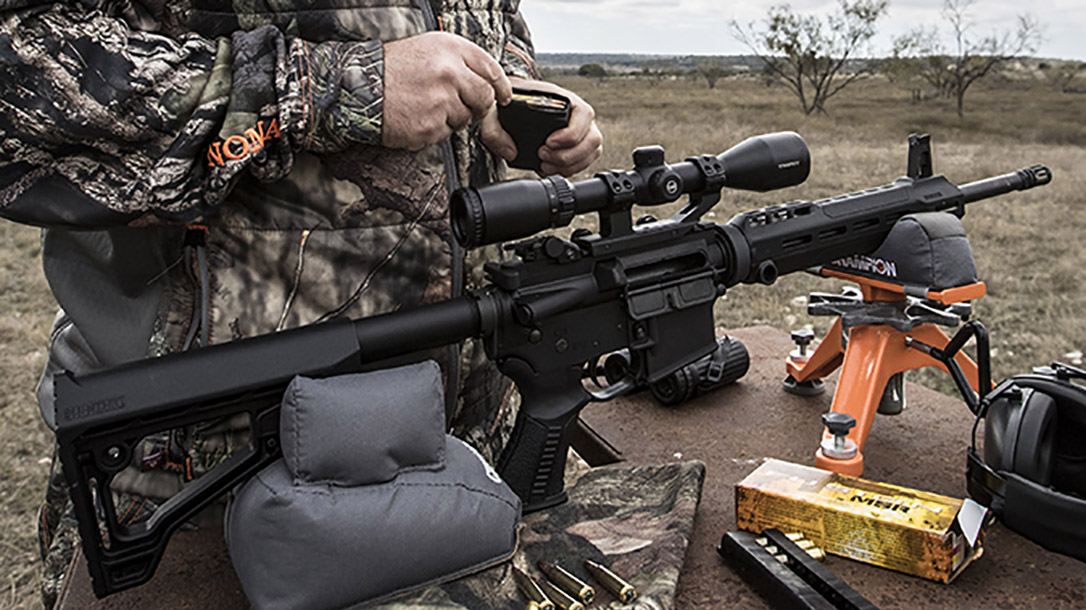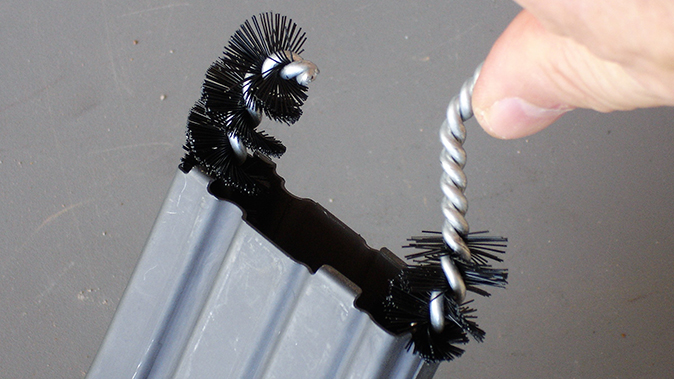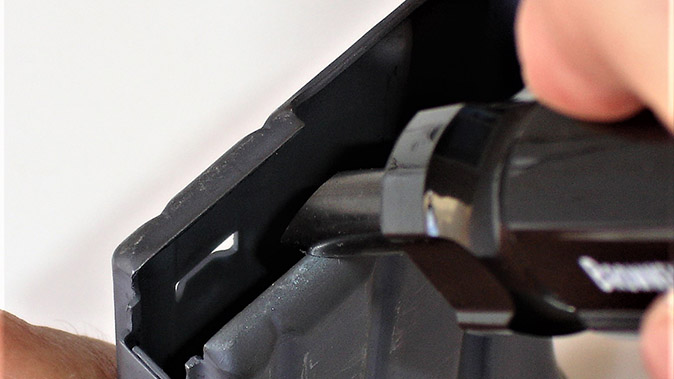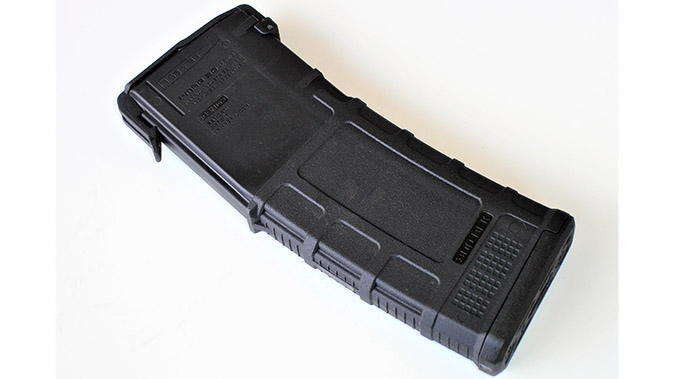It’s a no-brainer that the AR magazine is as critical as the ammo we use. A sizable percentage of weapon malfunctions can be attributed to magazine-related issues. Even the best magazines need a little tender loving care. AR mag cleaning and maintenance is just as important as cleaning and maintaining your rifle. Yet, all too often, we neglect them.
The first AR magazines were designed to be disposable, single-use items. The U.S. military soon decided that this wasn’t optimal, and the magazines were redesigned to allow easier disassembly for cleaning and maintenance.
AR Mag Cleaning & Maintenance
AR Magazine Disassembly
You need to take your magazines apart to clean and inspect them periodically. Don’t overdo this, however. Disassembly should be done only as necessary. Routine disassembly will cause unnecessary wear. There are numerous polymer magazines for the AR platform on the market. Methods will vary, but most are designed for easy disassembly and cleaning. In general, they require less cleaning and maintenance than aluminum USGI magazines. Drum magazines are more complex and generally difficult to take apart and clean in the field. Many require special powder lubricants and aren’t designed to remain loaded for long periods of time.
Advertisement — Continue Reading Below
AR Magazine Cleaning & Maintenance Steps
Magazines don’t need to be cleaned after every range session. But after a high volume of shooting or exposure to the elements, including dirt or dust, cleaning is definitely called for. Taking apart USGI aluminum magazines is a simple procedure, but doing so improperly can damage the magazine. The disassembly and maintenance procedures for a SureFire high-capacity magazine are similar to those of conventional USGI aluminum magazines.
Step 1: The stamped floorplate on USGI-style magazines needs to be removed. There are several ways to do this. You can either slide a flat screwdriver beneath the tab on the front edge of the floorplate and the magazine body and pry the floorplate forward or insert a cleaning rod, a small punch, or the tip of a cartridge into the drain hole on the floorplate and flex it slightly downward and forward. Don’t pry the floorplate tabs off the bottom, as they will break if you do so.
Step 2: Slide the floorplate off and work the spring and follower out of the bottom of the magazine. The follower may take a little effort to remove.
Advertisement — Continue Reading Below
Step 3: Examine the spring and follower. The spring and follower should be carefully checked for signs of wear or damage. All magazine springs will fatigue over time. Compare the spring to a new spring, or one that’s known to be good. If the old spring is fatigued, it will be noticeably shorter. If so, it’s time to replace it or discard the magazine.
Step 4: With the spring and follower removed, run a dry cloth through the magazine body several times, or use a brush to scrub inside the inside of the magazine body.
Advertisement — Continue Reading Below
What To Look For
Magazine Spring Fatigue
A large part of AR mag cleaning and maintenance is taking care of the all-too-important springs. AR magazines can remain loaded for years with little fatigue in the spring. Fatigue becomes more likely as the magazine is repeatedly cycled (loaded and unloaded) over time and how close to the elastic limit it is repeatedly deformed. Also, pay particular attention to any signs of chipping or cracking on the follower. Any loose chips in the magazine body are a sure indicator of follower damage.
Look for Wear & Damage
If a magazine has worn or damaged parts, either discard the magazine or replace the parts and use the magazine exclusively for training. Training-only magazines must be clearly marked to prevent them from being mistaken for a duty magazine.
Ditch the Lube
Don’t lubricate or leave any oils or lubrication inside the magazine or its components. Not only is it unnecessary, but it will become a dirt magnet.
Advertisement — Continue Reading Below
Magazine Reassembly
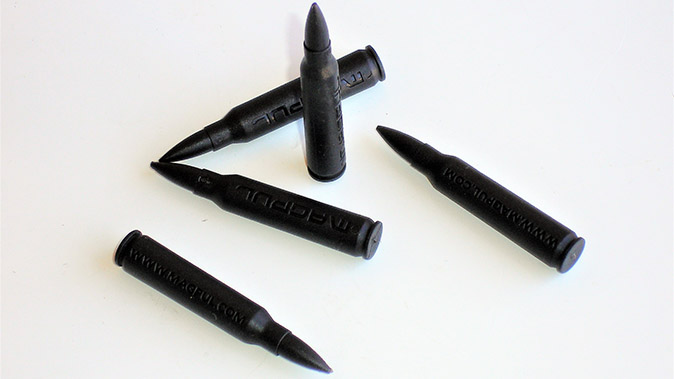
Reassembly is in reverse order. Just remember to insert the spring into any hole provided in the follower to ensure proper travel and pressure. Test the magazine after reassembly by loading a dummy round and ensuring that it feeds properly and the bolt locks back. Better yet, take the magazine to the range and test it.
Types of AR Magazine Failures
If you get a magazine malfunction, retest the magazine. If it creates a second malfunction, immediately remove it from duty until the problem can be ascertained and remedied, or use the magazine for training purposes only. The best option, of course, is to simply get a new magazine.
Failure to Feed
Failures to feed are commonly caused by a weak magazine spring or a bound follower. The use of self-leveling/anti-tilt followers helps resolve follower issues, as will keeping your magazines clean.
Advertisement — Continue Reading Below
USGI magazines with old black USGI followers shouldn’t be used for anything other than range sessions. The tan USGI followers and Magpul Enhanced Self-Leveling Followers are considered optimal because they won’t tilt.
Advertisement — Continue Reading Below
Type 3 Malfunction/Double-Feed
A Type 3 malfunction, commonly referred to as a double-feed, may be caused by either a dirty or weak extractor or magazine feed lip separation. If the feed lips are wider than the factory specs, they can cause double-feeds, including the dreaded bolt override malfunction. A magazine failing to drop free from the magazine well is another sign that the feed lips may be out of spec.
This type of jam will occur with almost any magazine that has the requisite spring rate and rapid feeding due to an older or worn extractor or springs. Correcting this could be as simple as replacing the blue-colored spring with a black one, cleaning the shellac or polymer deposited from all those cheap steel shell cases, or replacing the ejector spring in rare cases. Proper cleaning will often remedy the extraction/ejection issues, though.
Poor gas pressure may allow the bolt to extract and eject a fired case but won’t let the bolt travel back far enough to pick up the rear of the case head. This is evident when the fired case just barely clears the ejection port and the fresh case has an indent in the case body, with the bullet nose partially forward of the front edge of the magazine or maybe even be pushed into the feed ramp slightly. Correcting this could mean replacing your rifle’s gas rings or the adjustable gas block/gas tube. Fired cases should eject forcefully from the ejection port.
Advertisement — Continue Reading Below
The same type of jam will also occur if a shooter fails to fully chamber a round and then puts another one on top of that round. It can also occur with a broken extractor or case lodged in the chamber. Both should be treated as a broken or disabled firearm. Even if you have the time to rip the magazine out, are able to clear the chamber, and get the gun back into action, the gun will most likely duplicate the problem each time due to faulty or broken parts.
A true double-feed occurs only when one feed lip is bent up on the right or left side and will occur every other round. This is fairly easy to detect and correct by simply noting which side the next round is positioned on and whether or not a jam occurs after the first or second shot from the bent side.
If both feed lips are bent up, it will most often occur with each shot. Both lips will need adjustment. This condition exists in poorly or non-heat-treated aluminum and most steel magazines since the manufacturers rely on the inherent strength of the steel rather than using a higher carbon content.
Advertisement — Continue Reading Below
AR Magazine Wear & Tear
Part of AR mag cleaning and maintenance is performing routine examinations. AR magazines should be routinely examined for wear or damage. One common test is to half-load a magazine (15 rounds in a 30-round magazine, for example) and smack the base on a hard surface to see if a round pops out to determine if the feed lips are spread and/or the magazine spring is weak. This isn’t a good test, as all magazines will release the tension on the top rounds, allowing one or two rounds to pop out when tested in this manner.
Cracked Feed Lips
Cracked feed lips can occur if a fully loaded polymer magazine is dropped from weapon height onto a hard surface and lands on the feed lips. This is less likely to occur with better polymer magazines. The feed lips on USGI aluminum magazines may not crack but will bend under similar circumstances.
The correct maximum and minimum clearance tolerances of a magazine’s feed lips are next to impossible to gauge visually with any degree of accuracy. Using a magazine feed lip go/no-go gauge eliminates all of this guesswork. Magpul PMAG impact/dust covers double as go/no-go gauges for PMAGs.
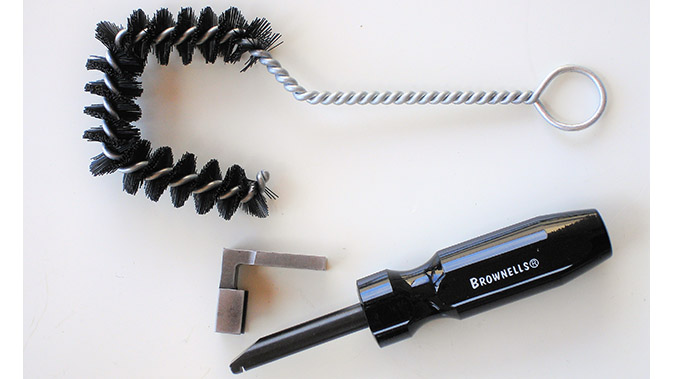
If the feed lips are out of spec, either discard the magazine or, in the case of aluminum magazines, bend them back into shape. Use a tool explicitly designed to rectify this, such as Brownells’ Magazine Feed Lip Tool. Don’t use pliers, as this can easily result in unrepairable damage to the magazine. Magazines with reconditioned feed lips need to be clearly marked and consigned to training/range use only, as there will be metal fatigue in bent feed lips.
Using a magazine loading tool will not only save you time (and your thumb) but, more importantly, will also eliminate stress and wear to the feed lips from loading, extending the service life of the magazine.
Marking Your AR Magazines
All magazines should be marked with an individual magazine identifier. It’s also a good idea to place your initials or a unit identifier on them.
AR magazines that will be loaded with 300 Blackout ammo should also be clearly differentiated from magazines that will be used for 5.56mm/.223 rounds, for example. If you chamber a 300 Blackout round in a 5.56mm gun, it can go into battery by pushing the bullet back into the cartridge case. Firing the round will result in catastrophic consequences.
Consider using a magazine that’s purpose-built for the 300 Blackout, such as the new Magpul PMAG 30 AR 300 B GEN M3. Reliability issues can occur when using some 300 Blackout rounds in magazines designed for 5.56mm ammo.
More Useful Tips
Whenever possible, don’t drop expended/empty magazines on the ground. Use a dump pouch, or even a pocket if need be. I don’t recommend putting expended magazines back into the mag pouch, as making this a habit can come back to bite you in a combat scenario.
To sum it all up, use only quality magazines and take care of them every now and then so they won’t let you down. AR mag cleaning and maintenance will extend the life of your equipment, but don’t hesitate to dispose of them when they’ve reached the end of their service life. Remember new magazines are cheap, but your life isn’t.
